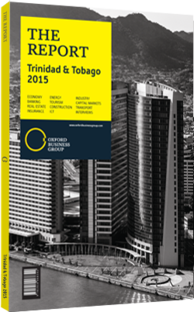Racquel Moses, President, InvesTT: Interview

Interview: Racquel Moses
What have been the trends for inward and outward investment flows in recent years?
RACQUEL MOSES: Since 2008 there has been an increasing trajectory of inward investment flows. In the period between 2011 and 2014 Trinidad and Tobago has seen an average of about $2bn per year in foreign direct investment (FDI) inflows. However, the inflow of FDI by sectoral contribution is very unevenly distributed, with the energy sector receiving about 77% of all inflows in that period. We believe there is strong potential for rebalancing the FDI contribution to other industries.
In terms of origin, investment has remained strongly linked to traditional investors such as the US and the UK. Interest in T&T is increasing, especially from Asia, but we believe that the diversification of investment sources is a process that takes some time to build. There is also potential to grow FDI from South American countries like Brazil and from West African nations that are heavily investing abroad, as well as from some other European players.
What is quite impressive for a country of our size is that between 2011 and 2014 there were about $4.1bn in FDI outflows. The peak was reached in 2012 at $1.68bn and the trend has been decreasing through 2014. However, local manufacturing and food and beverage companies are increasingly pursuing outward re-investment strategies, and we expect these figures to increase in the short term. Recipients of outward investment were mainly the US and Chile, but also China and India. Through expanding their portfolio in other countries, businesses are getting exposed to new technologies, methods and competitive practices.
How are improvements in the ease of doing business furthering domestic and foreign investment?
MOSES: In the World Bank’s “Doing Business” report, T&T has improved the most in resolving insolvency; in 2011 our ranking stood at 183 but as of 2015, this has improved to 66. The country has also had a consistent run with regards to investors getting electricity – in the past four years we have achieved a high of 10th place and not placed lower than 24th. Even before the World Bank’s report, we had noticed improvements in the efficiency of the T&T Electricity Commission’s signing-off process – it now takes 61 days to complete the whole procedure. This is a very strategic advantage, as the cost and ease of getting electricity is currently one of the most attractive features of T&T as an investment destination. Investors have also acknowledged a significant improvement in the awarding of construction permits by the Town and Country Planning division of the Ministry of Planning and Sustainable Development.
We still need to improve in certain respects, such as enforcement of contracts and the speed of our legal systems. The procedure to register a business has greatly improved, but we still need to fix issues like the name registration process or the requirement to be physically present in T&T. We have built a robust online system, but it still requires some manual intervention that we are aiming to eliminate. Accomplishing most of these targets will not require legislative amendments.
What progress has been achieved in the development of an industrial maritime cluster in T&T?
MOSES: The dry-docking and ship repair cluster within the maritime industry has received new impetus with the execution of a memorandum of understanding between Trinidad Dry Dock Company and InvesTT. This agreement seeks to facilitate the future development and operation of the Port of Spain Dry Dock on the reclaimed 57-ha Sullivan Island. The project, to be located offshore in the Gulf of Paria off the coast of Port of Spain, includes a 250-ha dredged turning basin and a causeway connecting Sullivan Island to the highway network of mainland Trinidad. This is set to benefit a wide range of ancillary industrial services from food and beverage to steel supplies and restocking. We expect the selection of contractors to start in the second half of 2016 for some of the major works, while the full buildout is expected to take place in five to seven years.
You have reached the limit of premium articles you can view for free.
Choose from the options below to purchase print or digital editions of our Reports. You can also purchase a website subscription giving you unlimited access to all of our Reports online for 12 months.
If you have already purchased this Report or have a website subscription, please login to continue.

